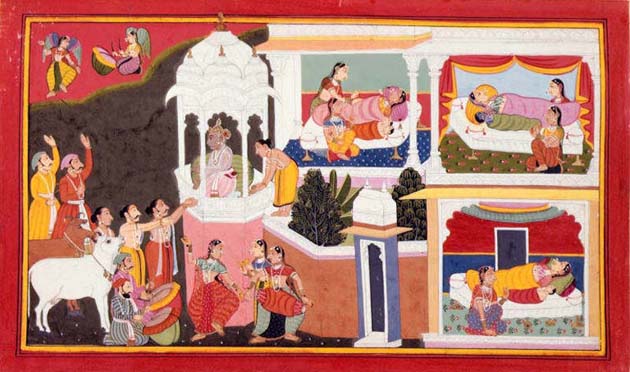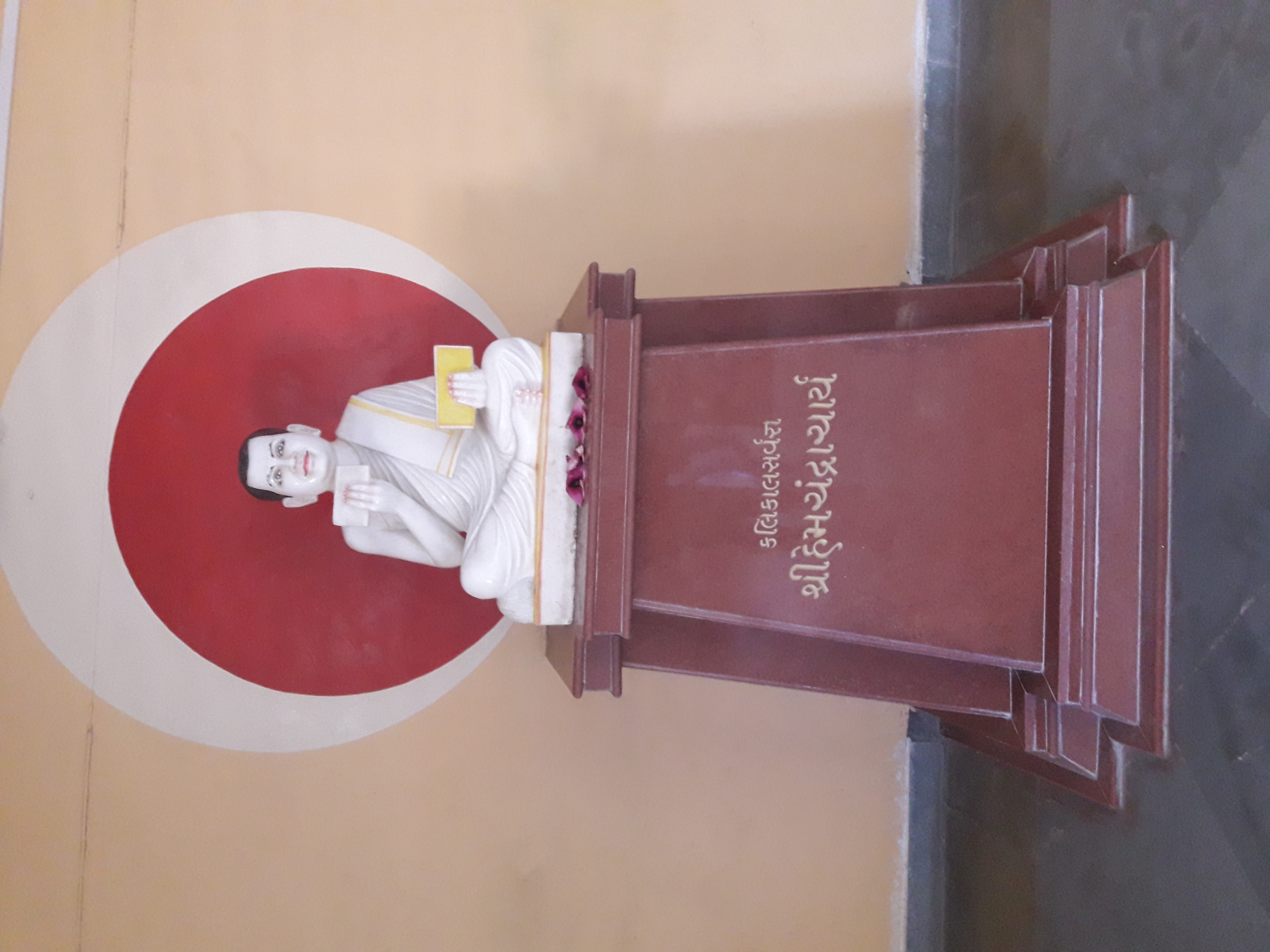|
Rama In Jainism
''Rama'' (Rāma), the hero of Ramayana, is described in the Jain scriptures as one of sixty-three illustrious persons, known as Salakapurusa. Among these, there are nine sets of Balabhadra, Vasudeva and Prati-Vasudeva. Rama was the 8th Balabhadra with Lakshmana and Ravana being his Vasudeva and Prati-Vasudeva counterparts. He is described as a young prince who is deprived of his throne and turned into a pauper. While living in exile his wife Sita is kidnapped by Ravana, King of Lanka. Rama then rescues Sita with the help of his brother Lakshmana and King Sugriva. Ravana is killed by Lakshmana (a deviation from the Hindu epic where Rama slays Ravana) and they both go into hell. Rama becomes a Jain muni and his soul attains moksha (liberation from the cycle of birth and death). Sita becomes a Jain sadhvi and is born into heaven as Indra. According to Nirvana Kanda Rama attained nirvana at Tungi Giri in Maharashtra, where the Jains worship his footprints. Sources The story of ... [...More Info...] [...Related Items...] OR: [Wikipedia] [Google] [Baidu] |
God In Jainism
In Jainism, godliness is said to be the inherent quality of every soul. This quality, however, is subdued by the soul's association with karmic matter. All souls who have achieved the natural state of infinite bliss, infinite knowledge ('' kevala jnana''), infinite power and infinite perception are regarded as God in Jainism. Jainism rejects the idea of a creator deity responsible for the manifestation, creation, or maintenance of this universe but rather have souls called devas and devis who have reached heaven for their merits and deeds, who influence the universe for a fixed time until they themselves get reincarnated to achieve and continue the cycle of enlightenment. According to Jain doctrine, the universe and its constituents (soul, matter, space, time, and principles of motion) have always existed. All the constituents and actions are governed by universal natural laws and perfect soul, an immaterial entity cannot create or affect a material entity like the universe. ... [...More Info...] [...Related Items...] OR: [Wikipedia] [Google] [Baidu] |
Lanka
Lanka (, ) is the name given in Hindu epics to the island fortress capital of the legendary asura king Ravana in the epics of the ''Ramayana'' and the ''Mahabharata''. The fortress was situated on a plateau between three mountain peaks known as the Trikuta Mountains. The ancient city of Lankapura is said to have been burnt down by Hanuman. After its king, Ravana was killed by Rama with the help of Ravana's brother Vibhishana, the latter was crowned king of Lankapura. His descendants were said to still rule the kingdom during the period of the Pandavas. According to the ''Mahabharata'', the Pandava Sahadeva visited this kingdom during his southern military campaign for the rajasuya of Yudhishthira. Ramayana The island was situated on a plateau between three mountain peaks known as the Trikuta Mountains. The ancient city of Lankapura is thought to have been burnt down by Hanuman. After its king, Ravana was killed by Rama with the help of Ravana's brother Vibhishana, the latt ... [...More Info...] [...Related Items...] OR: [Wikipedia] [Google] [Baidu] |
Janaka
Janaka is a character who appears in the Hindu epic Ramayana. He is an ancient Hindu king of Videha, which was located in the Mithila region. His name at birth was Sīradhvaja, and he had a brother named Kushadhvaja. His father's name was Hrasvaroman, a descendant of the king Nimi. The rulers of the Videha kingdom were accorded the title ''Janaka'', meaning 'father' in Sanskrit, and this character is the best-known bearer of the same. Janaka is revered as being an ideal example of non-attachment to material possessions. He was intensely interested in spiritual discourse and considered himself free from worldly illusions. His interactions with sages and seekers such as Ashtavakra and Sulabha are recorded in the ancient texts. His relationship with his adopted daughter Sita led her to be called Janaki. The city of Janakpur in Nepal is named after him and his daughter Sita. The Videha (or Mithila) kingdom was historically located between east of Gandaki River, west of Mahananda Rive ... [...More Info...] [...Related Items...] OR: [Wikipedia] [Google] [Baidu] |
Shatrughna
''Shatrughna'' ( sa, text=शत्रुघ्न, translit=śatrughna, lit=killer of enemies) is a prince of Ayodhya, King of Madhupura and Vidisha, and a brother of Prince Rama in the Hindu epic ''Ramayana''. He is also known as ''Ripudaman'' (vanquisher of foes). He is the twin of Lakshmana. He is a loyalist of Bharata, just like Lakshmana is to Rama. According to the Valmiki Ramayana, Shatrughna is one aspect of the manifestation of Vishnu (Rama). Shatrughna also appears as the 412th name of Vishnu in the Vishnu Sahasranama of the Mahabharata. According to the ''Ramayana'', Rama is the seventh avatar of Vishnu, while Lakshmana, Shatrughna, and Bharata are the avatars of Sheshanaga, Panchajanya, and the Sudarshana Chakra respectively. Birth and family Shatrughna was born to the king of Ayodhya, Dasharatha, and his third wife, Queen Sumitra, a princess of Kashi. Dasharatha's other two wives, Kaushalya and Kaikeyi, bore children who would be his half-brothers. Kaushaly ... [...More Info...] [...Related Items...] OR: [Wikipedia] [Google] [Baidu] |
Bharata (Ramayana)
Bharata ( sa, भरत, translit=bharata) is a character in the ancient Indian epic ''Ramayana''. He is the son of Dasharatha, the virtuous king of Kosala, and Kaikeyi, daughter of the King Ashwapati of Kekeya. He is a younger half-brother of Rama and rules Ayodhya while Rama is banished from the country and fights to recover his wife Sita, kidnapped by Ravana. He is married to Mandavi, daughter of Kushadhvaja, with whom he has sons – Taksha and Pushkala. In the ''Ramayana'', Bharata is presented as a symbol of dharma. He is also an incarnation of Sudarshana Chakra, the divine weapon of Vishnu, while Rama is the incarnation of Vishnu himself. Today, Bharata is mostly worshipped in Kerala. One of the few temples in India dedicated to him is the Koodalmanikyam Temple. Etymology According to Monier Monier-Williams, ''bharata'' in Sanskrit means "one to be r beingmaintained".Monier Monier-Williamsभरत Sanskrit English Dictionary with Etymology, Oxford University Pre ... [...More Info...] [...Related Items...] OR: [Wikipedia] [Google] [Baidu] |
Ayodhya
Ayodhya (; ) is a city situated on the banks of holy river Saryu in the States and union territories of India, Indian state of Uttar Pradesh. Ayodhya, also known as Sāketa, Saketa, is an ancient city of India, the birthplace of Rama and setting of the great epic Ramayana. Ayodhya was once the capital of the ancient Kosala Kingdom. It has an average elevation of 93 meters (305 feet). Owing to the belief as the birthplace of Rama, Ayodhya (Awadhpuri) has been regarded as first one of the Sapta Puri, seven most important pilgrimage sites (Mokshdayini Sapt Puris) for Hindus. The early Buddhist and Jain canonical texts mention that the religious leaders Gautama Buddha and Mahavira visited and lived in the city. The Jain texts also describe it as the birthplace of five tirthankaras namely, Rishabhanatha, Ajitanatha, Abhinandananatha, Sumatinath and Anantnath, and associate it with the legendary Bharata Chakravarti. From the Gupta Empire, Gupta period onwards, several sources me ... [...More Info...] [...Related Items...] OR: [Wikipedia] [Google] [Baidu] |
Ikshvaku Dynasty
The Solar dynasty (IAST: Suryavaṃśa or Ravivaṃśa in Sanskrit) or the Ikshvaku dynasty was founded by the legendary king Ikshvaku.Geography of Rigvedic India, M.L. Bhargava, Lucknow 1964, pp. 15-18, 46-49, 92-98, 100-/1, 136 The dynasty is also known as ("Solar dynasty" or "Descendants of the Sun") which means that this dynasty prays to the Sun as their God and their originator (the Gayatri Mantra is a prayer offered to the Sun God as the Sun is the main deity of the Solar Dynasty), and along with Lunar dynasty comprises one of the main lineages of the Kshatriya Varna. The first ''Tirthankara'' of Jainism, Rishabhdeva himself was King Ikshvaku. Further, 21 Tirthankaras of Jainism were born in this dynasty. According to Buddhist texts and tradition, Gautama Buddha descended from this dynasty. Many later kings of the Indian subcontinent claimed to be of Suryavamsha descent. The important personalities belonging to this royal house are Mandhatri, Muchukunda, Ambarisha, B ... [...More Info...] [...Related Items...] OR: [Wikipedia] [Google] [Baidu] |
Swarn Jain Temple, Gwalior - Ram
{{Given name, type=both ...
Swarn is both a given name and surname. Notable people with the name include: * Swarn Noora, Punjabi singer * Swarn Singh Kalsi, Indian engineer * George Swarn (born 1964), American football player See also * Swan (surname) Swan is an English surname. Notable people with the surname include: Academics * Daniel C. Swan, American cultural anthropologist and museum curator * Donald A. Swan (1935–1981), American anthropologist * Janis Swan, American-New Zealand food ... [...More Info...] [...Related Items...] OR: [Wikipedia] [Google] [Baidu] |
Vasudeva-hindi
''Vasudeva-hindi'' (IAST: Vasudevahiṇḍī, "Vasudeva's wanderings") is a Jain text by Sangha-dasa, probably from 5th century India. The text narrates several stories in the form of nested narrative layers. The main story is borrowed from Gunadhya's '' Brihat-katha'', with the original hero Nara-vahana-datta replaced by Krishna's father Vasudeva. Authorship and date ''Vasudeva-hindi'' is the oldest surviving text of the Jain narrative literature. The Jain monk Sangha-dasa wrote it in archaic Maharashtri Prakrit language. The author claims that the legend of Vasudeva was first told by Mahavira's pupil Sudharman to his disciple Jambu, and since then, the story was transmitted to the author through a series of teachers and disciples. The text was definitely composed before 610 CE, when Jina-bhadra-gani Kshama-shramana refers to it in his ''Visheshana Vati''. The author dates the text to the year 530 of an unspecified calendar era. Scholars K.R. Chandra and M.A. Dhaky believe t ... [...More Info...] [...Related Items...] OR: [Wikipedia] [Google] [Baidu] |
Uttarapurana
''Uttarapurana'' is a Jain text composed by ''Acharya'' Gunabhadra in the 9th century CE. According to the Digambara ''Digambara'' (; "sky-clad") is one of the two major schools of Jainism, the other being '' Śvētāmbara'' (white-clad). The Sanskrit word ''Digambara'' means "sky-clad", referring to their traditional monastic practice of neither possessing ... ''Uttarapurana'' text, Mahavira was born in Kundpur in the Kingdom of the Videhas. The narration in Uttarapurana continues the account in Mahapurana, written by Acharya Jinasena and completed by Gunabhadra. References Citations Sources * * Jain texts {{India-culture-stub ... [...More Info...] [...Related Items...] OR: [Wikipedia] [Google] [Baidu] |
Hemchandra
Hemachandra was a 12th century () Indian Jain saint, scholar, poet, mathematician, philosopher, yogi, grammarian, law theorist, historian, lexicographer, rhetorician, logician, and prosodist. Noted as a prodigy by his contemporaries, he gained the title ''kalikālasarvajña'', "the knower of all knowledge in his times" and ''father of Gujarati language''. Born as Changadeva, he was ordained in the Śvētāmbara school of Jainism in 1110 and took the name Somachandra. In 1125 he became an adviser to King Kumarapala and wrote ''Arhanniti'', a work on politics from a Jain perspective. He also produced ''Trishashti-shalaka-purusha-charita'' (“Deeds of the 63 Illustrious Men”), a Sanskrit epic poem on the history of important figures of Jainism. Later in his life, he changed his name to Hemachandra. Early life Hemachandra was born in Dhandhuka, in present-day Gujarat, on Kartika Sud Purnima (the full moon day of Kartika month). His date of birth differs according to sources ... [...More Info...] [...Related Items...] OR: [Wikipedia] [Google] [Baidu] |







